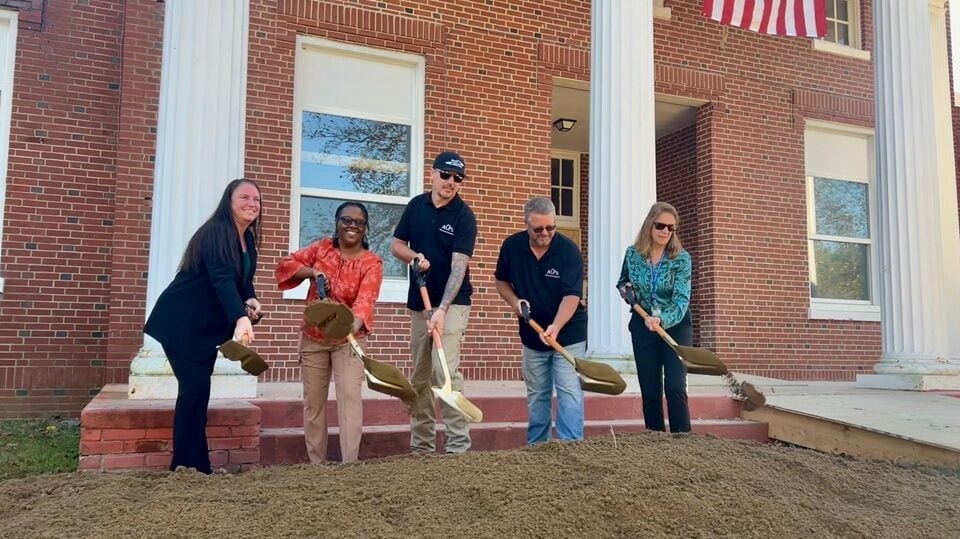
Community members, Delegate Rob Bloxom and Accomack County School Board officials and Administration gathered in Accomac Tuesday morning to celebrate the groundbreaking of a major restoration project that will give new life to one of the county’s historic educational landmarks.
The renovation of the former Accomac Primary building will give a new central home to the Accomack County School Board Administration, which is now housed in the County Administration Building and other various buildings throughout the county. There will also be a large meeting room to host County meetings.
“This event marks more than just turning over soil,” Janet Martin Turner, Chair of the Accomack County School Board said. “It’s the turning of a page and the start of a new chapter filled with vision and collaboration.”
Turner remarked that the school, originally dedicated on November 11, 1932, was built and furnished for just $60,000. At the time, it was hailed as one of the most modern and complete school buildings on Virginia’s Eastern Shore, boasting 10 classrooms, an auditorium, library, laboratory, and administrative offices on the first floor. The second floor included dental and medical clinics, restrooms, dressing rooms, and a fireproof booth for motion picture equipment—an innovation for its day.
The building served as a high school until 1953, when it became Accomac Elementary School. In 1970, it transitioned again, becoming Accomac Primary School, where it educated generations of local children. Its first Principal was Tommy Johnson, who served from the school’s opening until 1945, followed by Carl Custis, who led the school for more than three decades until 1978. The building’s last year in operation as a school was in 1998.
“This was a community school that inspired hundreds of children to grow their minds and reach for the stars,” she continued. “Today, many of those former students still live right here in our community. We will honor their legacy by restoring this campus, preserving its history, and preparing it for its next chapter.”
The project is estimated to be completed in March of 2027 and is estimated to cost $10 million, which was in line with another plan to completely tear down the historic building and build from scratch.
“I look forward to the day we gather again,” Martin said in conclusion, “not for a groundbreaking—but for a ribbon cutting. The best is yet to come.”













